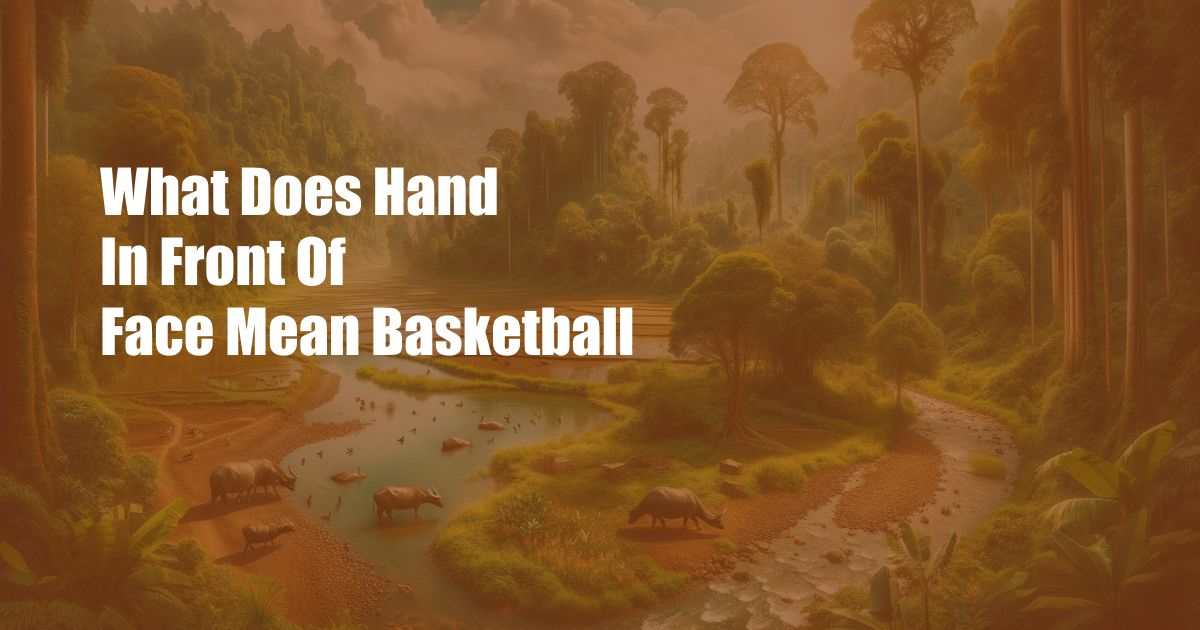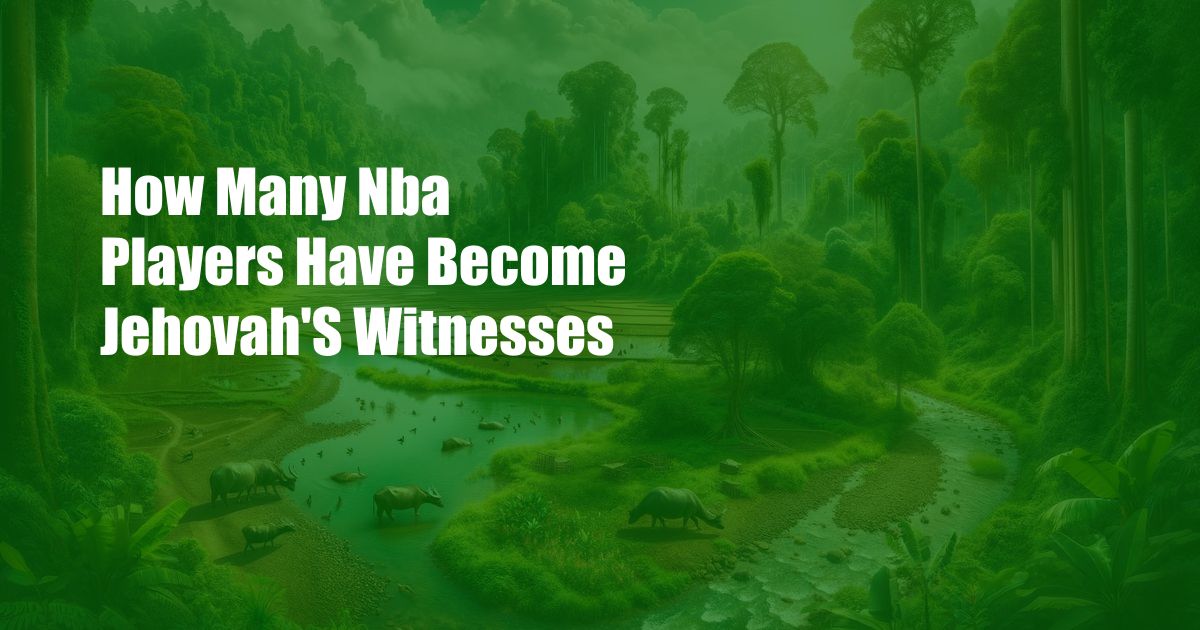
Putting a Hand in Front of Your Face in Basketball: The Sign and Its Significance
Basketball is a fast-paced and physically demanding sport that requires players to communicate effectively on the court. Besides verbal communication, players use a variety of hand signals and gestures to convey messages to their teammates and opponents.
One of the most common hand gestures in basketball is putting a hand in front of the face. This simple yet effective sign has several meanings, depending on the context in which it is used. In this comprehensive guide, we will delve into the nuances of this hand gesture and explore its various implications in the game of basketball.
Defining the Hand Gesture
The “hand-in-front-of-face” gesture in basketball involves a player extending their arm and placing their hand in front of their face, with their fingers spread apart.
This gesture can be used in different ways to convey specific messages:
- Defense: When a player puts their hand in front of their face while guarding an opponent, it usually indicates a defensive stance. The player is signaling that they are ready to guard their opponent closely and prevent them from scoring.
- Communication: This gesture can also be used as a way to communicate with teammates. By putting their hand in front of their face, a player can signal to their teammates that they are open to receive a pass or that they are setting a screen.
- Strategy: The hand-in-front-of-face gesture can also be used to convey strategic information to teammates. For example, a player may use this gesture to signal a particular play or formation to their teammates during a timeout or huddle.
Historical Context and Meaning
The hand-in-front-of-face gesture has been used in basketball for decades. Its origins can be traced back to the early days of the sport when players needed a way to communicate quickly and effectively on the court.
Over the years, the gesture has evolved and taken on different meanings. Today, it is one of the most widely recognized hand signals in basketball and is used by players of all levels.
Detailed Explanation of Usage
The hand-in-front-of-face gesture can be used in a variety of situations in basketball, including:
- On defense: A player may use this gesture to indicate that they are guarding an opponent one-on-one or in a zone defense.
- On offense: A player may use this gesture to signal to their teammates that they are open to receive a pass or that they are setting a screen.
- During timeouts or huddles: A player may use this gesture to convey strategic information to their teammates, such as a particular play or formation.
- To communicate with referees: A player may use this gesture to signal to the referee that they believe a foul has been committed or that they have a question about a call.
The hand-in-front-of-face gesture is a versatile and effective way for players to communicate on the basketball court. It can be used to convey a variety of messages, from defensive strategies to offensive plays. By understanding the different meanings of this gesture, players can improve their communication and teamwork on the court.
Latest Trends and Developments
In recent years, there have been some new trends and developments related to the hand-in-front-of-face gesture in basketball.
One trend is the use of this gesture to communicate more complex messages. For example, some teams have developed specific hand signals that incorporate the hand-in-front-of-face gesture to indicate different plays or formations.
Another trend is the use of this gesture by players to express their emotions. For example, a player may put their hand in front of their face to show frustration after missing a shot or to celebrate after making a big play.
These trends show that the hand-in-front-of-face gesture is continuing to evolve and take on new meanings in the game of basketball.
Tips and Expert Advice
Here are a few tips and pieces of expert advice for players who want to use the hand-in-front-of-face gesture effectively:
Make sure your hand is clearly visible to your teammates and opponents.
- Use the gesture in combination with other hand signals and verbal communication to convey your message clearly.
- Practice using the gesture in different situations so that you can become comfortable using it in game situations.
By following these tips, you can use the hand-in-front-of-face gesture effectively to communicate on the basketball court.
Frequently Asked Questions (FAQs)
Q: What is the most common meaning of the hand-in-front-of-face gesture in basketball?
A: The most common meaning of the hand-in-front-of-face gesture in basketball is defense.
Q: Can the hand-in-front-of-face gesture be used to communicate with referees?
A: Yes, the hand-in-front-of-face gesture can be used to communicate with referees. Players may use this gesture to signal to the referee that they believe a foul has been committed or that they have a question about a call.
Q: Is the hand-in-front-of-face gesture used in other sports besides basketball?
A: Yes, the hand-in-front-of-face gesture is used in other sports besides basketball. It is also used in sports such as football, soccer, and volleyball to communicate various messages.
Q: Can you give me an example of a complex message that can be communicated using the hand-in-front-of-face gesture?
A: Some teams have developed specific hand signals that incorporate the hand-in-front-of-face gesture to indicate different plays or formations. For example, a team may use a hand-in-front-of-face gesture in combination with other hand signals to indicate a specific pick-and-roll play.
Q: What are some of the latest trends in the use of the hand-in-front-of-face gesture in basketball?
A: One trend is the use of this gesture to communicate more complex messages. Another trend is the use of this gesture by players to express their emotions.
Q: Any other tips for using the hand-in-front-of-face gesture effectively in basketball?
A: Yes, make sure your hand is clearly visible to your teammates and opponents. Use the gesture in combination with other hand signals and verbal communication to convey your message clearly. Practice using the gesture in different situations so that you can become comfortable using it in game situations.
Conclusion
The hand-in-front-of-face gesture is a versatile and effective way for players to communicate on the basketball court. It can be used to convey a variety of messages, from defensive strategies to offensive plays. By understanding the different meanings of this gesture and using it effectively, players can improve their communication and teamwork on the court.
Are you interested in learning more about basketball hand signals and gestures? Leave a comment below and let us know!
 Vikipedi.org Trusted Information and Education News Media
Vikipedi.org Trusted Information and Education News Media



